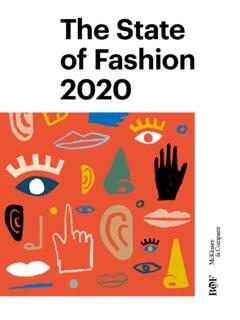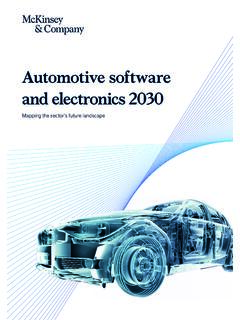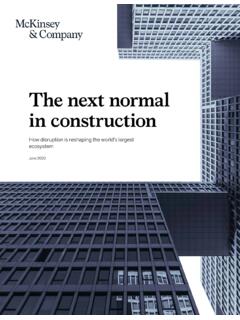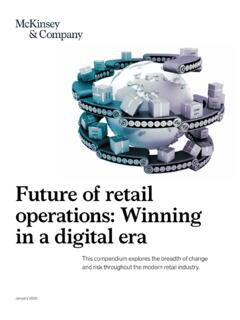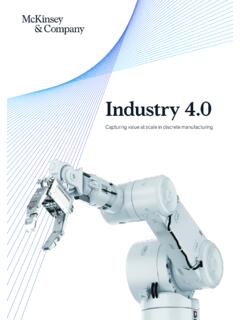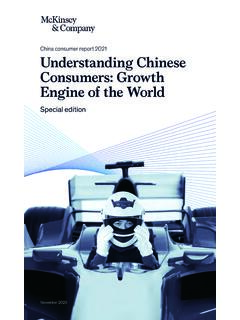Transcription of A year of disruption in the private markets: McKinsey ...
1 A year of disruption in the private marketsMcKinsey Global private Markets Review 2021 April 2021 Copyright 2021 McKinsey & Company. All rights reserved. This publication is not intended to be used as the basis for trading in the shares of any company or for undertaking any other complex or significant financial transaction without consulting appropriate professional part of this publication may be copied or redistributed in any form without the prior written consent of McKinsey & summary 2 Part I: A year in review1 A turbulent start to the decade 5 Fundraising 6 Industry structure 7 Assets under management (AUM) 11 Performance 11 Part II: The continued evolution of private markets firms6 Advancing diversity in private markets 48 Authors 60 Further insights 60 Acknowledgments 61 ContentsContents2 private equity rebounds quickly 13 Fundraising 14 AUM 18 Industry performance 20 Deal activity 24 Multiples and leverage 26 Dry powder 27 Permanent capital 283 Real estate falls with the pandemic 32 Closed-end funds 33 Open-end funds 33 AUM 33 Deal volume 36 Spotlight: US real estate 38 4 private debt.
2 A port in the storm 435 Natural resources and infrastructure 457 A new commitment to ESG 52 8 The pandemic s lasting impact on private markets 57 Executive summaryThe year 2020 was turbulent for private markets, as it was for much of the world. We typically assess meaningful change in the industry over years or decades, but the pandemic and other events spurred reassessment on a quarterly or even monthly basis. Following a second-quarter COVID correction comparable to that seen in public markets, private markets have since experienced their own version of a K-shaped recovery: a vigorous rebound in private equity contrasting with malaise in real estate; a tailwind for private credit but a headwind for natural resources and equity (PE) continues to perform well, outpacing other private markets asset classes and most measures of comparable public market performance.
3 The strength and speed of the rebound suggest resilience and continued momentum as investors increasingly look to private markets for higher potential returns in a sustained low-yield environment. The most in- depth research continues to affirm that, by nearly any measure, private equity outperforms public market equivalents (with net global returns of over 14 percent). We highlight several trends in particular: PE investors appear to have a stronger risk appetite than they did a decade ago. During the global financial crisis (GFC) in 2008, many limited partners (LPs) pulled back from private asset classes and ended up missing out on much of the recovery. This time, most LPs seem to have learned from history, as investor appetite for PE appears relatively undiminished following the turbulence of the last year.
4 All things considered, it was a relatively strong year for PE fundraising. Overall funds raised declined year on year due to an apparent short-term discontinuity in the early months of the pandemic, but the pre-pandemic pace of fundraising returned by Q4. Growth in assets under management (AUM) and investment performance in most asset classes eased off in the spring, as the industry adjusted to new working norms, then came back strong in the latter half of the year. Venture capital (VC) bucked the broader trend with strong growth, driven by outsize interest in tech and healthcare. In PE, fundraising growth of successor funds strongly correlates with performance of the preceding fund at the time of fundraising launch. This is an intuitive pattern, now backed up by data.
5 But another bit of conventional wisdom among LPs that growth in fund size risks degrading performance turns out not to hold up under analysis. Growth in fund size seems to have little correlation with performance. private equity purchase multiples (alongside price-to-earnings multiples in the public markets) have kept climbing and are now higher than pre-GFC levels. In parallel, dry powder reached another new high, while debt grew cheaper and leverage increased factors providing upward support for PE deal activity. Few transactions were completed in the depths of the (brief) slide in the public markets, reminding many in the industry that waiting for a buying opportunity may entail a lot more waiting than buying. Fundraising for private equity secondaries flourished in 2020, tripling on the back of strong outperformance in recent years.
6 The space remains fairly concentrated among a handful of large firms, with the largest fund sizes now rivaling buyout megafunds. 2A year of disruption in the private marketsContinued evolution in secondaries may be key to making private markets more accessible to a broader range of investors. The phrase permanent capital like private equity itself means different things to different people. To some, it refers to GPs sale of a stake in the firm, either directly to an investor, or via a fund-of-funds stake, or via IPO. Others interpret the term to allude to LP fund commitments of longer-than-normal or even indefinite duration. Many now also use the term to connote GPs acquisition of insurance companies with balance sheets that may be investible at least partly in the GPs offerings.
7 In all of these forms, permanent capital has accelerated as private markets firms continue to diversify their sources of capital away from traditional third-party blind-pool fundraises. Another form of permanent capital, special-purpose acquisition companies (SPACs), boomed in 2020. Enthusiasm for the tech, healthcare, and clean-energy sectors propelled a huge surge of SPAC deals. private markets firms dove in, both as deal sponsors and as sellers. SPAC activity has continued into 2021, as many investors remain optimistic that this third wave of SPACs will prove more durable than those in prior market estate was hit hard by the pandemic, though the degree of recovery within the asset class remains unclear as the public-health crisis continues. Fundraising and deal making fell sharply, as owners avoided selling at newly depressed (and uncertain) prices.
8 Rapid changes in how the world lives, works, plays, and shops affected all real estate asset classes. Office and retail saw the most pronounced changes some of which seem likely to endure which are causing investors and owners to rethink valuation and value creation strategies alike. The success of the unplanned transition to a remote workplace surprised employers and initiated a review of both their footprints and their in-office experiences. Office values fell on the expectation of lower demand, forcing investors to contemplate the office of the future as they rethink their investment approaches. A rapid shift to omnichannel shopping impaired retail real estate valuations, particularly for shopping malls. The industrial sector proved less vulnerable , benefiting from a surge in demand for direct-to-consumer fulfillment.
9 private debt was a relative bright spot in 2020, with fundraising declining just 7 percent from 2019 (and North America fundraising increasing 16 percent). The resilience of the asset class owes to a perfect storm of long-term growth drivers (for example, low-yielding traditional fixed income) that were complemented in 2020 by renewed investor interest in distressed and special situations strategies. The asset class is likely to continue growing into 2021, entering the year with a record fundraising resources and infrastructure had a challenging year, with lackluster investment performance and further declines in fundraising. Energy transition remains the main story, as depressed demand for conventional energy increasingly contrasts with growing interest in is more than just numbers.
10 In some respects, the PE industry in early 2021 strongly resembles the picture a year earlier: robust fundraising, rising deal volume, elevated multiples. But for the institutions that populate the industry, transformation has come faster than ever, accelerating old trends and spawning new ones. We consider three notable vectors of change for GPs and LPs over the last year: Who they are. Diversity, equity, and inclusion (DE&I) made strides in private markets in 2020 in focus if not yet in fact with consensus rapidly building on the need for greater attention and action. Both GPs and LPs are beginning to be more purposeful in 3A year of disruption in the private marketsAbout this reportMcKinsey is the leading adviser to private markets firms, including private equity, real estate, and infrastructure firms, with a global practice substantially larger than any other firm.


